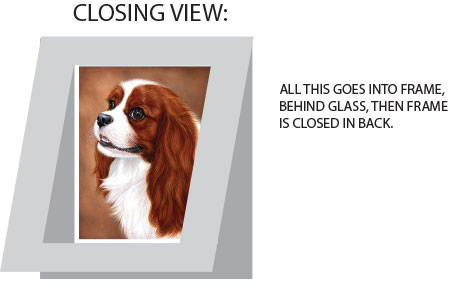FRAMING TIPS for Oils: (Pastels Below)
Frames are used to protect, aid in hanging or displaying, and provide a finished appearance to a piece of artwork. Frames should be used to enhance the artwork, not overwhem it. I don’t suggest using glass for oil paintings, as oils need to breath.
STYLE TIPS: (Which are subjective, and you can find many more on the web, but here are a few to start.)
You probably want it to fit your decor, so go from there, whether casual, formal, rustic, or contemporary, etc.
Bring the painting with you, pictures of the location to be hung, and try many options.
• Formal and Traditional Frames are usually ornate and are a good choice for making a statement. These frames help to draw the eye to the artwork, but, if not carefully selected, they can overwhelm the art.
• The larger the art, the wider the frame. But sometimes a wide frame on a small painting can make it appear larger and more expensive, and sometimes a narrow frame can work on larger art, giving it a contemporary look.
• Color should be fairly neutral, but compliment the colors in the painting. For example, a dark brown wood frame could work well if the pet’s eyes are that color.
I recommend getting a custom frame, because it will showcase the art better, and they have many more options, but if you want to get an off-the-shelf frame, keep the following in mind:
TECHNICAL TIPS FOR OIL PAINTINGS:
Try To Get: “Open Back Frames” are meant to be hung on the wall and are sold as just the frame face. They don’t have backing material, glazing material, or hanging hardware. Open back frames are commonly used for traditional profile stretched canvases, and are deeper to fit.
Frame Depth: The depth of a frame refers to the depth of the frame’s rabbet (the cut-out area behind the frame’s molding that holds the artwork in place). To find a frame that will accommodate your artwork, try to get a frame with a depth that is, at a minimum, the same as that measured depth.



